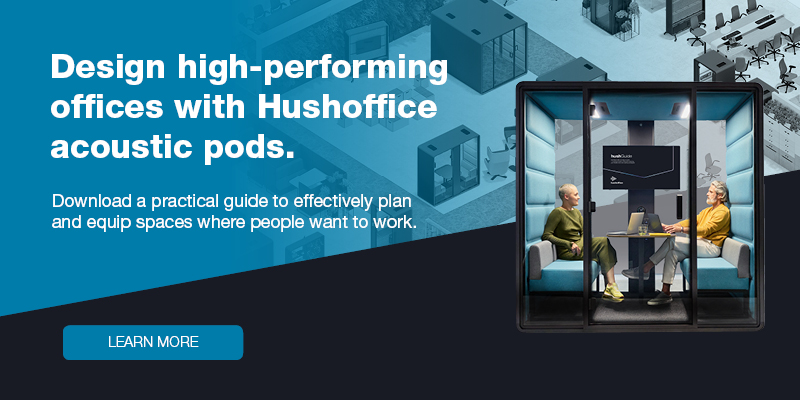The power of power naps
- Posted on: 9 March 2023
- By: Hushoffice Team
Workplace Napping Day is approaching on 13th March. With this in mind, we have come up with suggestions on how to become a successful team of power nappers.
Power naps at work – tl;dr
They can enhance mental acumen, help overcome the 2 p.m. energy drop, lower stress levels, boost your mood, help incorporate newly-gained skills, and improve your creativity.
History’s greatest minds swore by them, including Albert Einstein, Leonardo da Vinci, Salvador Dali, and Napoleon Bonaparte. In the contemporary working world, many modern companies, such as Google, Zappos, Uber, PwC, Ben & Jerry’s, and Cisco have established generous napping policies.
To introduce a culture of moderate napping, you should provide top-notch napping areas, establish clear standards for napping, share nap suggestions, and emphasise the importance of breaks among non-nappers.
It turns out that power napping is a highly-effective solution when adopted wisely. It’s a cost-effective way to improve employee performance, lower stress levels, and enhance wellness in the workplace. Our pods are excellent nap spaces, answering the call for regular rest and regeneration in the form of short power naps in the office
– says Mateusz Barczyk, Senior Brand Manager, Hushoffice.
Some of history’s greatest swore by napping.
For Einstein naps were his “little bedroom gymnastics,” which sharpened his problem-solving skills. Salvador Dali attributed some of his greatest works to his “slumber with a key” technique of creative brainstorming. The list goes on and includes other great names, such as da Vinci and Bonaparte.
Obviously, they discovered something really valuable.
Successful companies go with the napping idea.
According to Arianna Huffington, in the future nap rooms will be “as common as conference rooms.” Indeed, companies such as Google, Zappos, Uber, PwC, Ben & Jerry’s, and Cisco belong to the many companies that have already adopted generous napping policies.
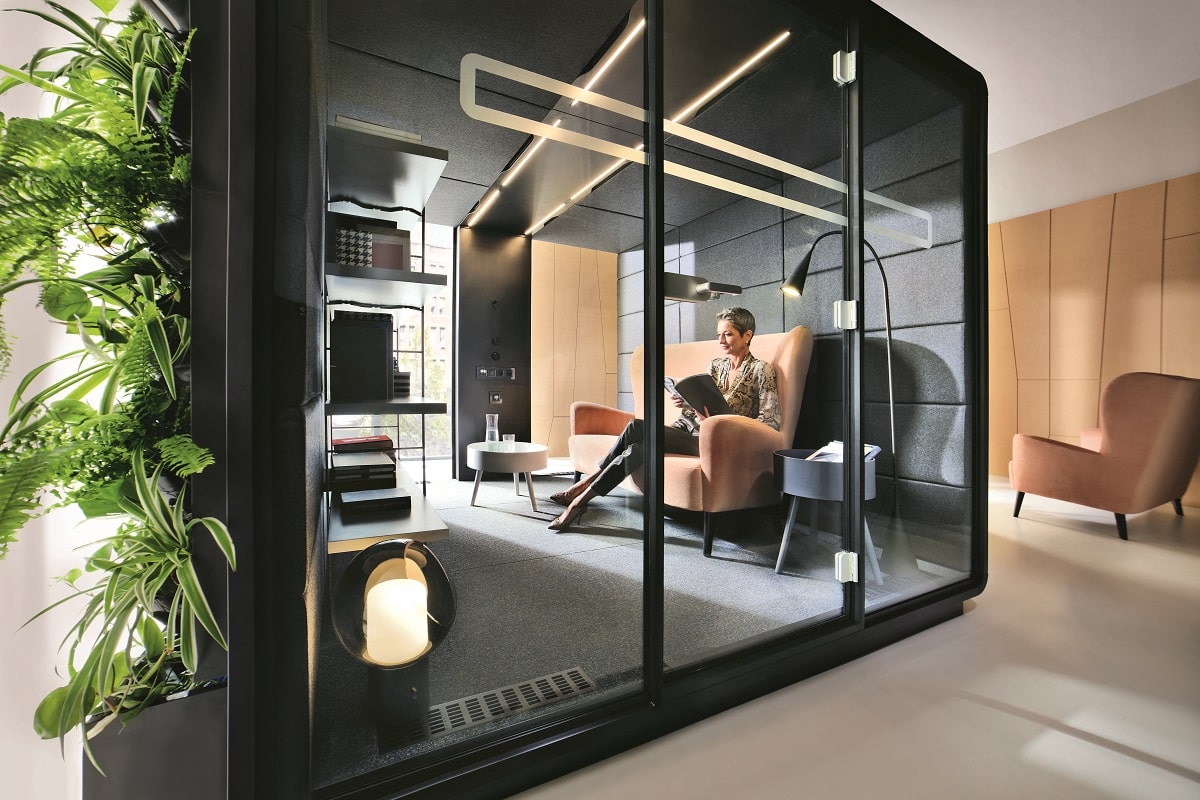
Naps can boost your mental acumen.
In fact, they are proven to enhance cognitive skills. When you are tired, concentrating on your task is a real struggle. However, a nap can bring you back in the saddle, allowing you to work with creative energy and sharp focus. For example, NASA pilots tend to take 26-minute in-flight naps, which improve their alertness and reaction time.
Naps can help you fight the 2 p.m. energy drop.
As many as 81% of people experience an afternoon crash. If you feel like you have hit a dead end after your lunch break, a quick catnap might save you. As Winston Churchill once put it: “The siesta turns one day into two; on rising you begin again with new energy.”
Naps can help lower stress levels.
Writer Tom Hodgkinson, who speaks in favour of naps, says, “When the going gets tough, the tough take a nap.” That’s true: power naps may help reduce stress, and even counteract the negative hormonal impact of a poor night’s sleep. What they also do is boost the immune system and lower blood cortisol levels.

Naps can boost your well-being and make you more composed.
According to a recent study of amateur athletes, people who took a nap experienced a decrease in negative emotions, such as anger, tension, or depression. Similar findings were reported in a 2015 study, which showed decreased self-reported impulsivity and increased tolerance for frustration among nappers.
Naps can boost your creativity, too.
As you begin to drift off, you enter a semi-lucid phase characterised by heightened creativity. According to the studies quoted by Scientific American, “if we can harness that liminal haze between sleep and wakefulness… we might recall our bright ideas more easily.” Thomas Edison, another great mind, also used naps as a technique to stimulate creative thought.
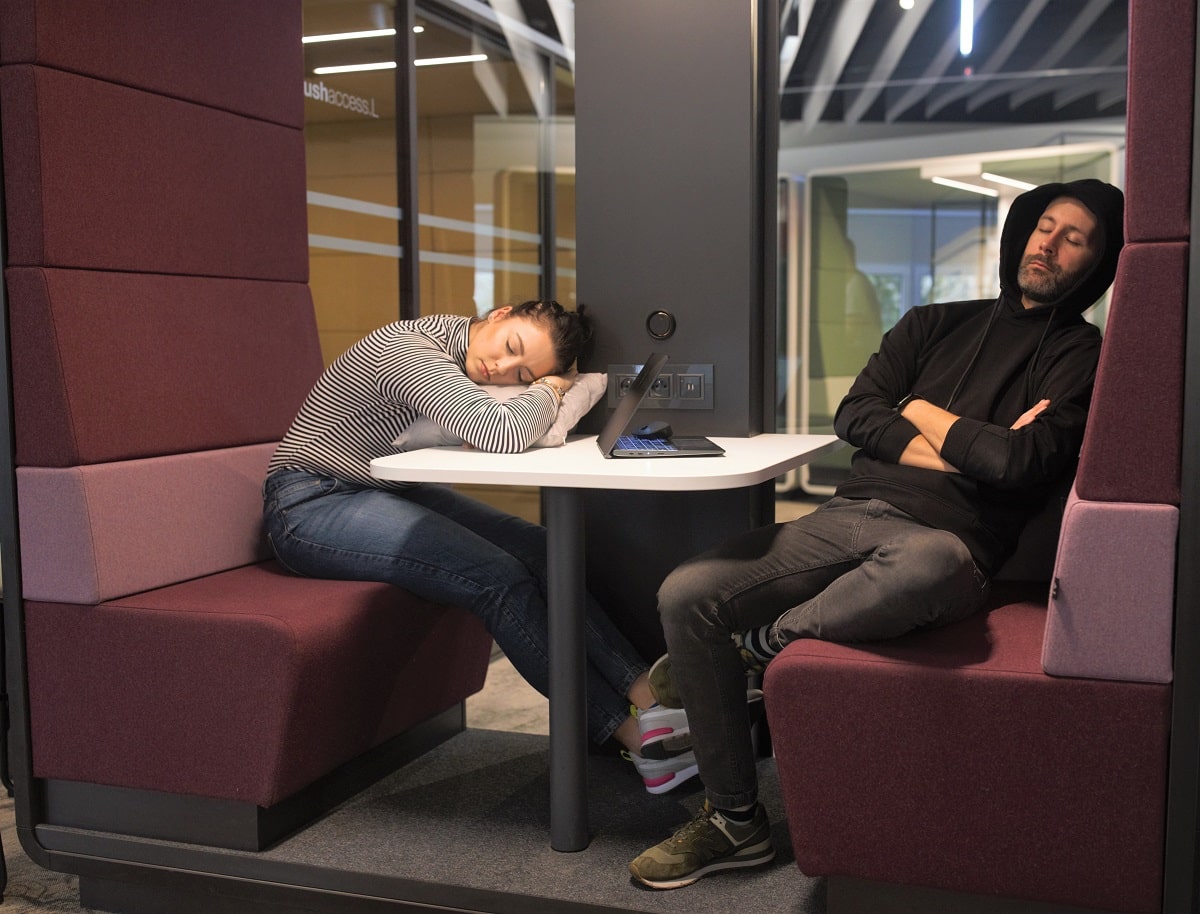
Naps help us incorporate newly-gained skills.
Scientific research proves that it’s not only practice, but practice and sleep that “make perfect”. Indeed, sleep is crucial for skill development as it helps us incorporate new information. Interestingly, even a very short nap is sufficient to improve memory processing.
Even the Dalai Lama mentioned the rebooting character of naps, emphasising that “sleep is the best meditation.”
The research proves naps to be highly beneficial for knowledge workers – everyone using their intellectual capabilities to create, process and implement knowledge in their work, solving problems, and making decisions on a daily basis
– adds Mateusz Barczyk, Senior Brand Manager, Hushoffice.
How to make a power nap work? Keep it short and sweet.
As author Edward Lucas says, “There is more refreshment and stimulation in a nap, even of the briefest, than in all the alcohol ever distilled.” The point is to keep it short. 10-30 minutes. 10 minutes is a perfect length to reduce fatigue, boost energy and cognition. A 30-minute nap also has a rejuvenating impact on mood and output.
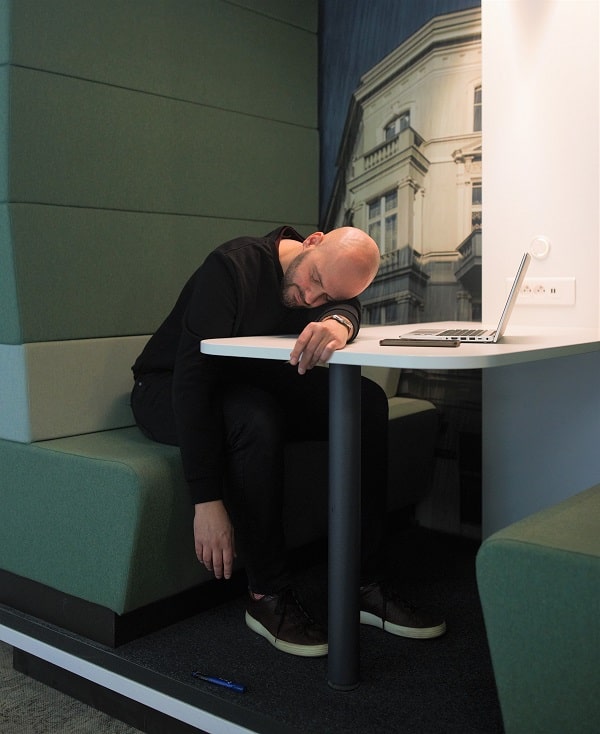
To establish a culture of moderate napping, you need to take deliberate steps.
As few as 34% of American adults take a nap on a typical day. Why?
Some workers may consider napping in the workplace as unprofessional behaviour, which negatively influences their productivity. Additionally, they may be worried about being judged by others if they decide to take a nap. Also, their workspace may lack nap spaces in general. But there’s some good news: all these obstacles can be overcome by introducing a few simple solutions, allowing you to encourage moderate naps and embrace the benefits of occasional siesta
– explains Mateusz Barczyk, Senior Brand Manager, Hushoffice.
What makes a perfect nap space?
It should be quiet, calm, dim, cosy, and private.
Quiet. A distraction-free environment is crucial for an effective nap. Thus, your napping areas need to be free from unexpected noises, including spontaneous conversations, ringing phones, or slamming doors. Consider using white noise machines to ensure peace and quiet.
- Calm. Minimalist aesthetics based on soft, soothing colours works best.
Dim. Darkness fosters relaxation. Invest in blackout curtains or space dividers to dim the space. You may also paint the walls dark or provide your employees with quality sleep masks or ear plugs.
Cosy. Comfort is a key ingredient of relaxation. That’s why your nap areas should be fitted with comfortable seats and supportive pillows. Ideally, they should also provide employees with a possibility of adjusting temperature and ventilation to their preferences. Additionally, you can equip the space with a fan and extra blankets for increased comfort.
Private. Privacy is crucial to make employees feel secure and unwind. Therefore, nap spaces in the office should be free of distractions, ensuring protection from disruptive stimuli, such as unexpected visitors.
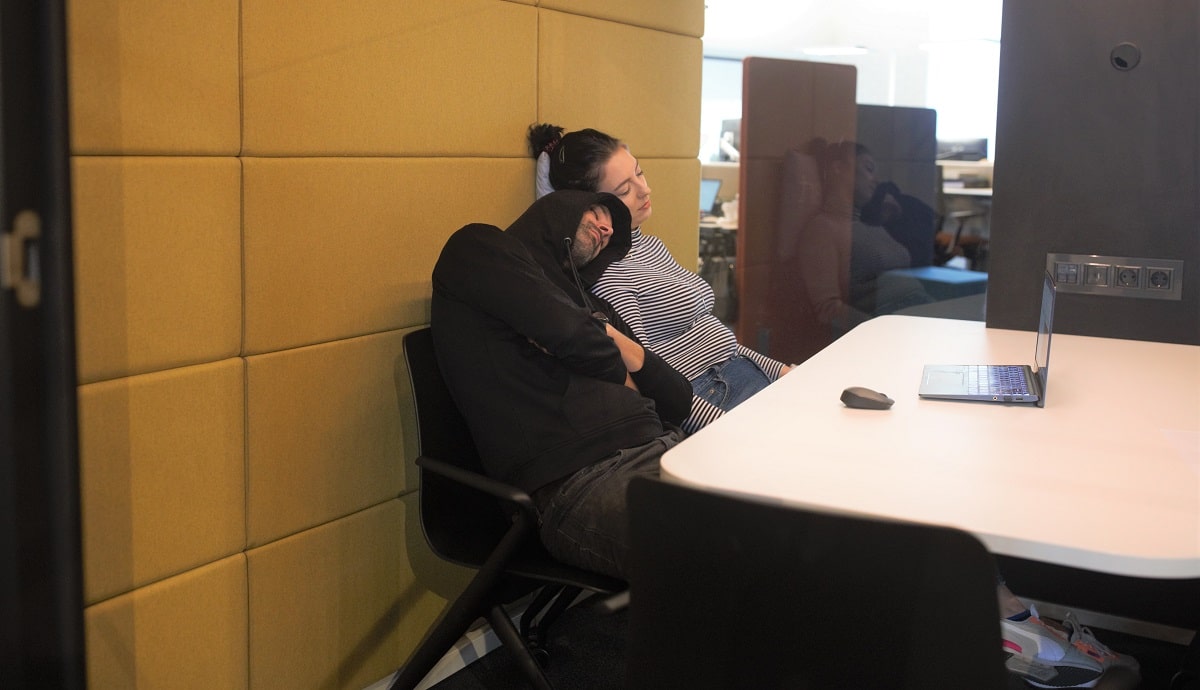
1. Establish clear standards for napping.
To establish an encouraging napping culture, provide your employees with clear napping guidelines that include recommended nap duration, dedicated spaces and booking procedures. Transparent rules of conduct ensure equal respect for the privacy of both nappers and non-nappers.
2. Share napping tips.
First of all, keep your naps short (10-30 minutes). Remember naps are most effective in the early afternoon. Unless it’s late in the day, try out “coffee naps.” Try to wake up without an alarm clock to minimise sleep grogginess. After your nap, spend a few minutes engaging in some light physical activity.
3. Emphasise the importance of breaks for non-nappers, too.
For some employees, naps simply don’t work. Still, you should encourage them to take breaks, not necessarily for napping, but for getting some fresh air instead. If you want to learn more about quality breaks, go to our blog: Become more resilient by prioritising recovery.
Workplace Napping Day brings employee well-being into focus.
The main idea is to highlight the advantages of napping and promote a nap-friendly office culture. So, when the date arrives, encourage your team to take a short, rejuvenating nap during the workday. It may seem like just a little R&R, but it can have a powerful, long-lasting impact that benefits everyone.
Power naps at work – summary
They can enhance mental acumen, help overcome the 2 p.m. energy drop, lower stress levels, boost your mood, help incorporate newly-gained skills, and improve your creativity.
History’s greatest minds swore by them, including Albert Einstein, Leonardo da Vinci, Salvador Dali, and Napoleon Bonaparte. In the contemporary working world, many modern companies, such as Google, Zappos, Uber, PwC, Ben & Jerry’s, and Cisco have established generous napping policies.
To introduce a culture of moderate napping, you should provide top-notch napping areas, establish clear standards for napping, share nap suggestions, and emphasise the importance of breaks among non-nappers.
Power naps at work – frequently asked questions
What’s the idea behind Workplace Napping Day?
On National Workplace Napping Day, employers promote the idea of taking restorative naps to enhance employees’ general wellness.
What can I do to encourage a positive napping culture?
Promote the practice of taking naps among leaders and managers to make it clear that napping is not only acceptable, but also encouraged. Prepare dedicated areas in the office to serve as private, quiet, cosy nap spaces. If your workers prefer napping in their cars, consider giving them such a possibility.
What is a quality nap space like?
It should be distraction-free, dim, calm, cosy, and private.
